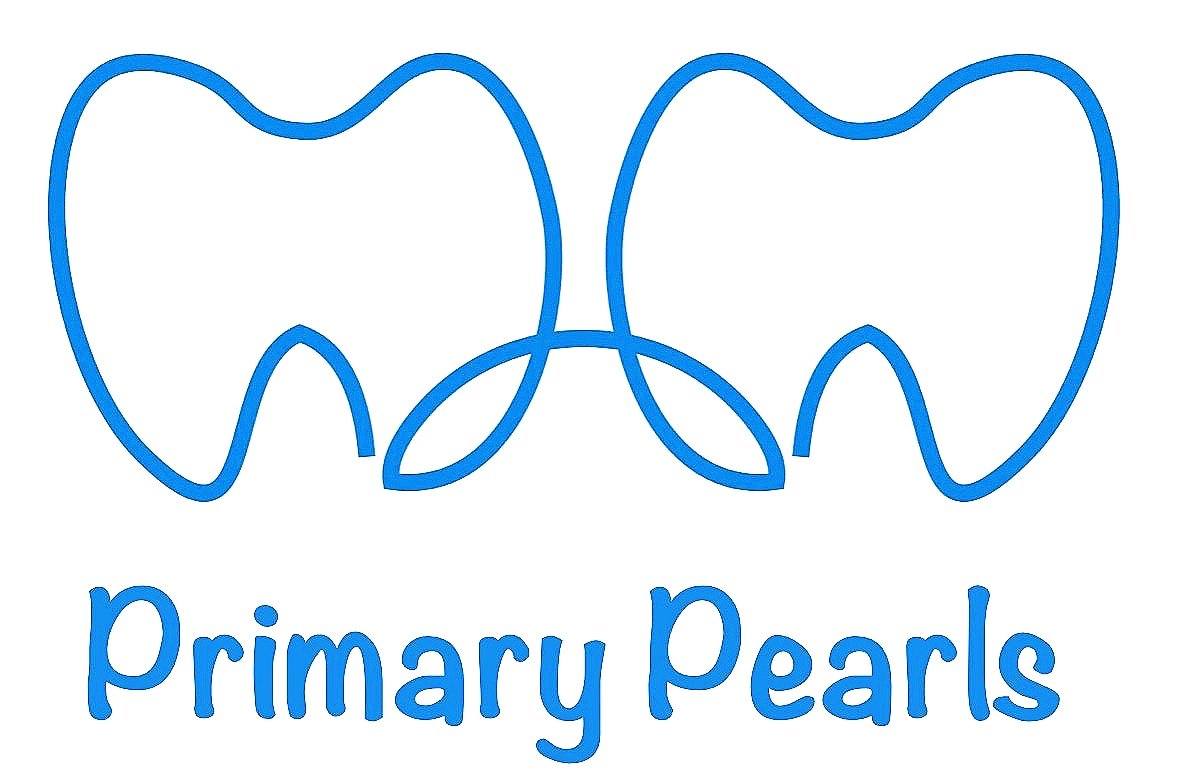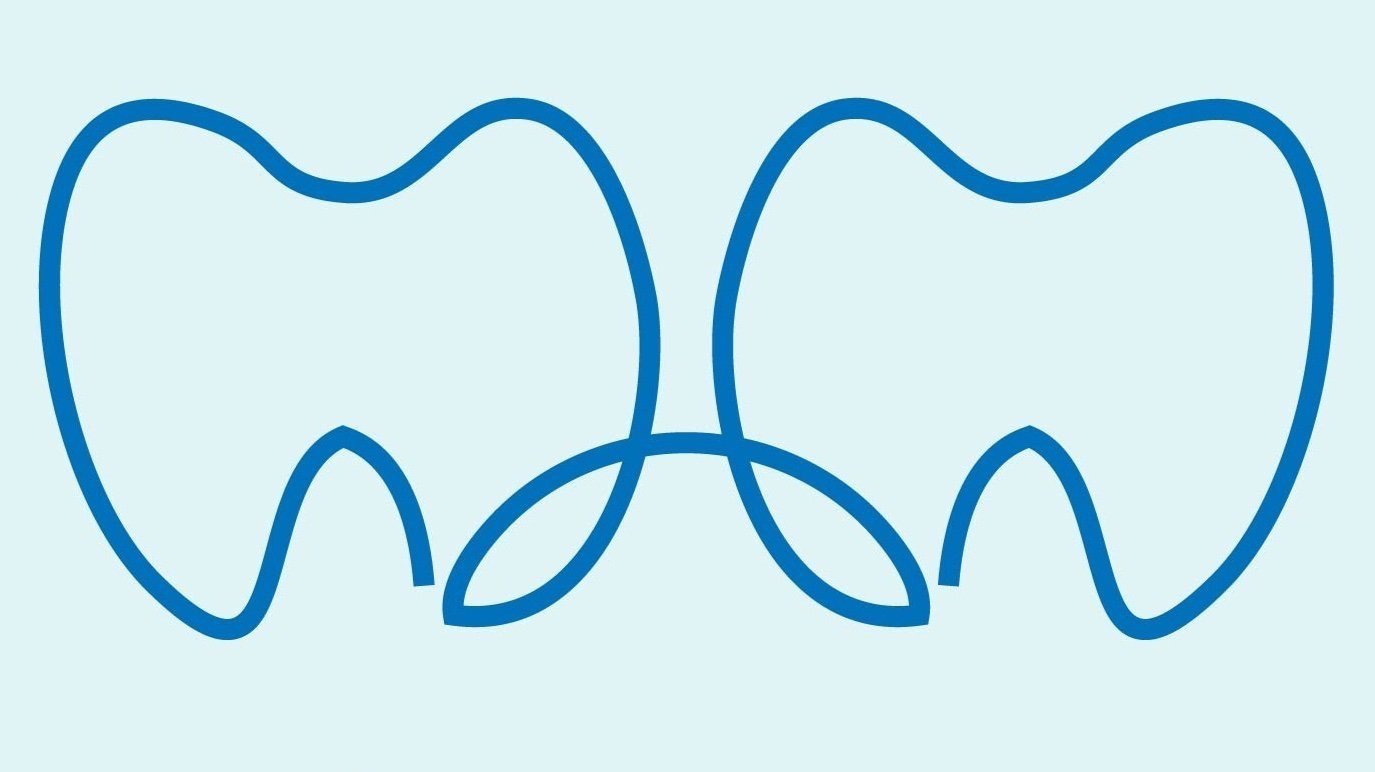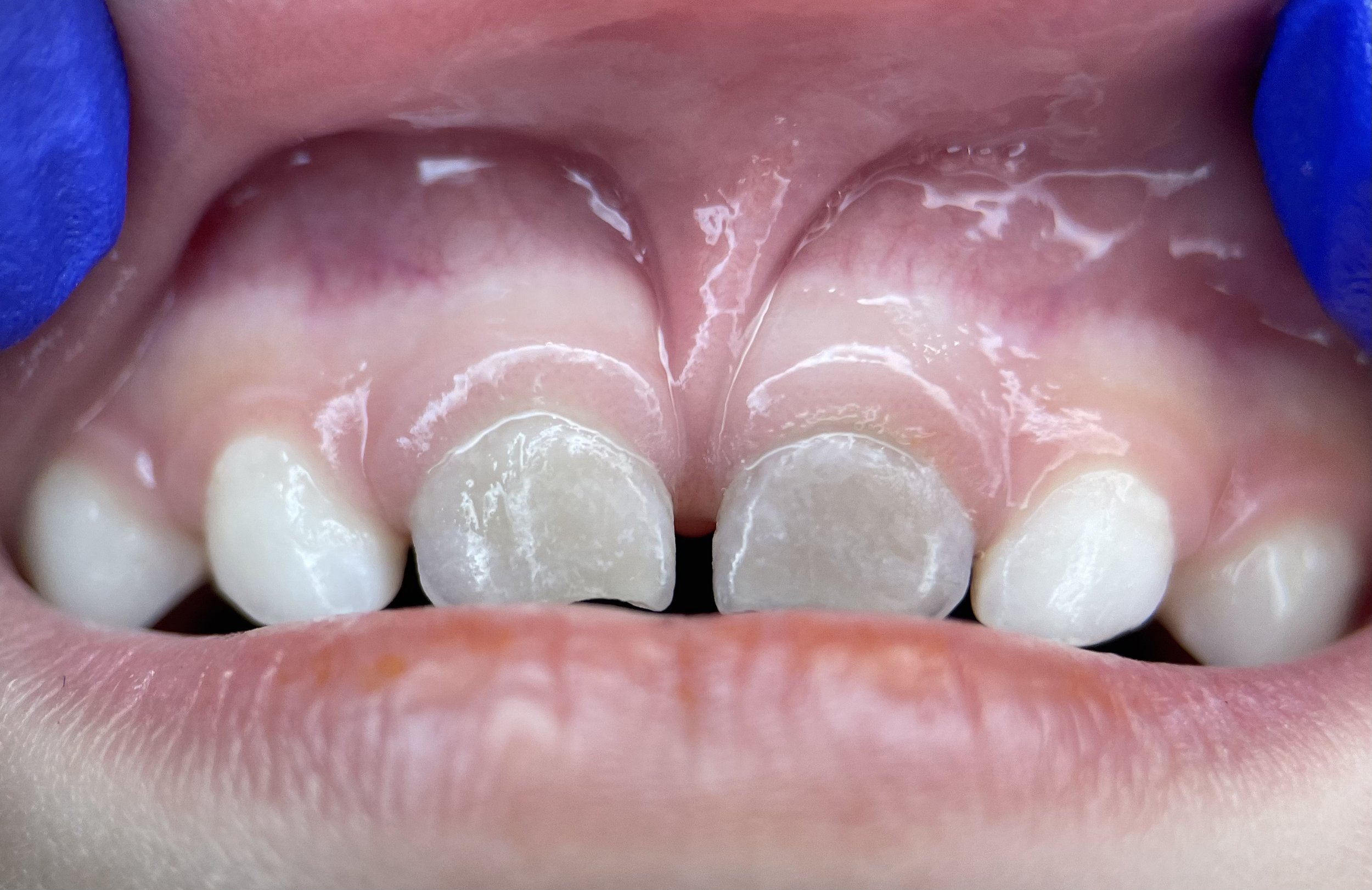Dark or Discolored Baby Tooth
We often get emergency visits with a chief complaint of: “My child’s baby tooth is dark or stained.” Here’s the information we typically provide.
Why do baby tooth discolor or darken? What does it mean?
Discolored front teeth (#E, F) with a history of trauma
When a patient schedules an appointment for dark/discolored baby teeth, the first question we ask is: “Did you child fall or have trauma to their teeth?”.
Typically the discolored baby teeth is the result of trauma. Sometimes the trauma is so minor, you may not have realized it happened. This is especially true of repeated minor traumas to the teeth.
Sometimes the discoloration is a result of dental decay or silver diamine fluoride application. Your dentist will let you know how to proceed with this situation.
If your child develops a discolored baby tooth, contact your local pediatric dentist.
Why do the teeth darken After Trauma?
If the teeth darken quickly following a trauma, you can think of it as a bruise. The trauma has resulted in the accumulations of blood byproducts (hemosiderin) with in the tooth. This discoloration may resolve in a few days if the blood supply of the tooth is able to remove it.
If the teeth darken slowly over time, it is likely a result of necrosis of the pulp tissue within the tooth (nerves and blood supply). This type of discoloration will likely not resolve on its own.
Do Discolored Baby Teeth Need Treatment?
Unless your child has other signs or symptoms, typically these teeth do not need treatment. The signs we look for are:
Pain
Swelling
Increased mobility (looseness) of the affected teeth.
If your child does not have these symptoms, most of these teeth can be maintained until they fall out naturally.
If you child develops any of these symptoms, treatment is usually indicated.
This patient had repeated trauma to her front tooth, which resulted in pain, infection, and a gingival abscess.
The radiograph confirms evidence of infection. Unfortunately, the only reliable treatment option in this case is extraction.
Long story short. If your child develops a dark tooth after a trauma, the tooth/teeth usually do not require further treatment unless some other signs develop. But be prepared - they may appear dark until they fall out naturally.
If this happens to your child, contact your local pediatric dentist to make sure treatment or intervention are not needed.




